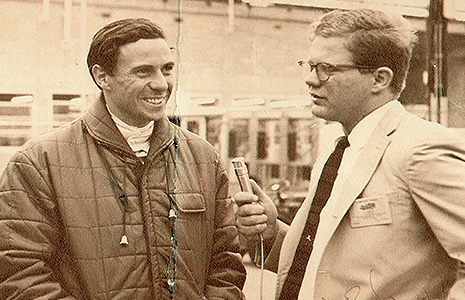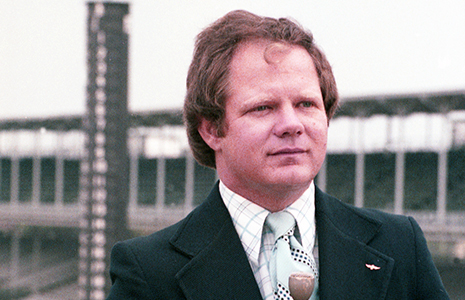INDYCAR Voices: Indy's 'Good Old Days' are in the eye of beholder
APR 12, 2016
"What happened to the good old days?" How many times have you heard that sentiment expressed?
The “Good Old Days” are relative. It mostly depends on when you started as an Indianapolis 500 fan. As we count closer to the 100th running of the great race, I think about my Good Old Days.
 My first race, 1960, saw what to this day many believe was the best fight ever, between Jim Rathmann and Rodger Ward changing the lead seemingly every corner. Rathmann won. I was hooked even before the race began. In 1961, the Cooper Climax appeared with a rear engine and driven by Jack Brabham.
My first race, 1960, saw what to this day many believe was the best fight ever, between Jim Rathmann and Rodger Ward changing the lead seemingly every corner. Rathmann won. I was hooked even before the race began. In 1961, the Cooper Climax appeared with a rear engine and driven by Jack Brabham.
Despite being a rookie myself, I read everything about the “500” before I had my first chance to travel to Indy. Sorry to say there wasn’t much reporting outside of Indianapolis back then. Like many who lived out of state, I subscribed to the Indianapolis Star by mail to keep up with the 30 days of May.
As a result of those reports, I decided I was a front-engine roadster fan. “Rear engines were for guys who like to be pushed around” was the mantra of us roadster guys. I was for the open exhaust roar and power of the four-cylinder Offy in a Watson roadster. You could see the driver, not just a helmet, and watch him fight the large steering wheel. Roadsters were driven by men who would strengthen their grip by squeezing rubber balls. They were A.J. Foyt, Eddie Sachs and Parnelli Jones. They were giants to me.
Remember the turbine that almost won? Those were the Good Old Days. Or were they?
The rear-engine cars were much advanced over the roadsters. There was Jimmy Clark of Scotland, who was one of my first interviews at Indy. There was Graham Hill, a rookie winner, who convinced Tony Hulman to put doors on the toilet stalls in the garages. Mark Donohue, a quiet guy called “Captain Nice,” came to the “500” with a young and savvy owner named Roger Penske. And here came the turbochargers and wings. OK, so these were the Good Old Days. Right?
 But what about the years that Mario Andretti, the Unser brothers, Johnny Rutherford, A.J. Foyt and Gordon Johncock were the kings of speed. I was now the anchor for the IMS Radio network after a four-year graduate course in race broadcasting given personally by the “Voice of the 500,” Sid Collins. My first race as anchor was in 1977. It was Foyt’s fourth win, the first driver to accomplish it.
But what about the years that Mario Andretti, the Unser brothers, Johnny Rutherford, A.J. Foyt and Gordon Johncock were the kings of speed. I was now the anchor for the IMS Radio network after a four-year graduate course in race broadcasting given personally by the “Voice of the 500,” Sid Collins. My first race as anchor was in 1977. It was Foyt’s fourth win, the first driver to accomplish it.
I was part of that incredible broadcast team that showed its stuff in calling the closing laps of the 1982 race between Johncock and Rick Mears. That was one of the greatest moments ever in sports broadcasting. So now, without question, those were the Good Old Days.
Then came the incredible ‘90s. F1 driving champions like Emerson Fittipaldi and Nigel Mansell were in the sport now. There were new names on the winner’s list; Arie Luyendyk, Eddie Cheever, Juan Pablo Montoya and Al Unser Jr. Remember Junior and the Mercedes stock-block engine in 1994? The sons of great champions were now taking their turn. The best of the Good Old Days? Maybe.
At the beginning of the 21st century, a common trait of winners now was to openly show their passion for Indy and its fans. The fence climber Helio Castroneves became a three-time winner. Dan Wheldon, Dario Franchitti and Tony Kanaan all saw the Indy checkered flag. Montoya is on the Borg-Warner with two different names; he is Juan in 2000 and Juan Pablo last year. For many, these are the Good Old Days.
My point is this: The power of the Indianapolis 500 to attract incredibly loyal fans is phenomenal. I love to talk with fans and last year tried a little experiment. I asked a number of fans from different age groups, “When were the Good Old Days?” The answers were all different.
So the magic of the Indianapolis 500 lives on as it has through 99 races. And I know there is some new young fan out there who will, 30 years from now, say the 100th Running of the Indianapolis 500 was the Good Old Days.






















